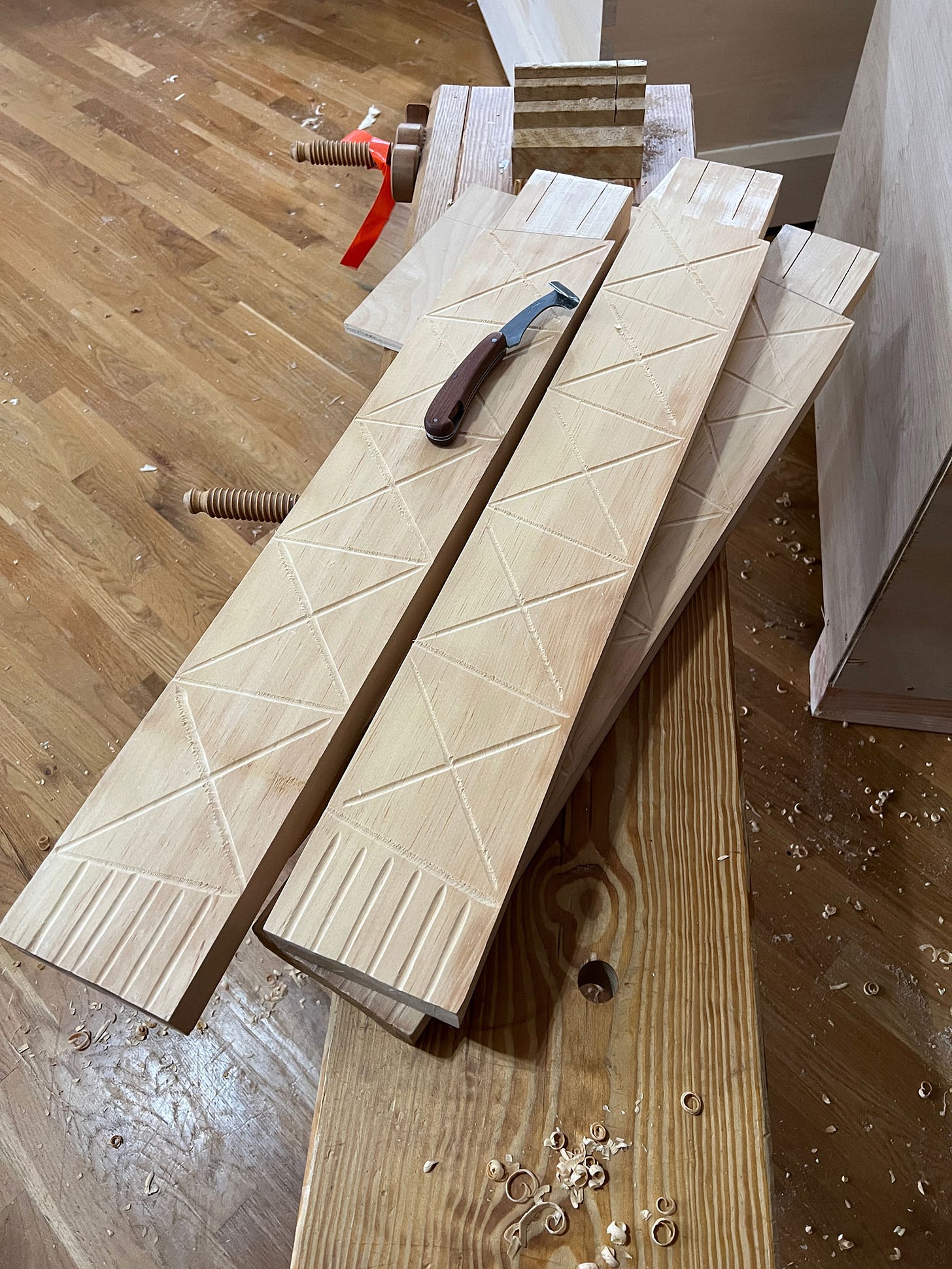'X' Marks the Person
The second glyph/spell/prayer is a simple “X” in a square. In his book “Ácsolt ládák titkai,” Gyenes Tamás calls this a “slanted cross.” So, it could be viewed as a Christian symbol. (Crosses for crucifixion were sometimes made in the shape of an X, an I or a T.)
Tamás also explains that this symbol could be a “soul” or a “person.” Something that happens at the intersection of two lines.
And that’s the way I explained it to my daughter Katherine. This symbol is on four faces of the legs of her new kitchen table. I said that one line represents her mother, Lucy, and the other represents her father, me. She is the intersection of those two lines.
She liked that.
This week I finished up her table and will deliver it tomorrow. The table is not going to be a project in the final book. There are too many things I would change – actually, too many things t…
Keep reading with a 7-day free trial
Subscribe to The American Peasant to keep reading this post and get 7 days of free access to the full post archives.


